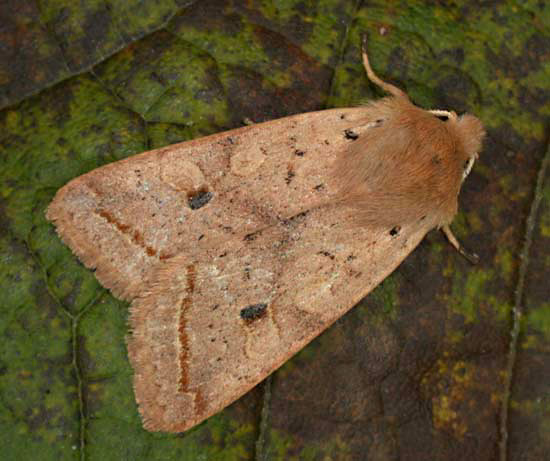Yellow-line Quaker
Leptologia macilenta
Checklist Number73.190 [B&F: 2264]
Verification
Record will be accepted (subject to date and location checks)
Common in broad-leaved woodland, scrub, heathland, moorland, hedgerows and gardens throughout the British Isles. Widespread and common in Hampshire and on the Isle of Wight. Wingspan 37-40 mm. Straight subterminal fascia distinguishes this species from the otherwise similar Brick A. circellaris and warm brown wings from the grey-winged Red-line Quaker A. lota. Larva feeds on various deciduous trees and shrubs, including Sessile and Pedunculate Oak, White and Black Poplar, Beech, Sallow, Hawthorn and Heather, and, when approaching maturity, on various herbaceous plants, over-wintering as an egg.


The abundance in each month is indicated as follows:
 No records
No records Very occasional
Very occasional Irregular
Irregular Uncommon
Uncommon Off-peak, but not unusual
Off-peak, but not unusual Off-peak, but not unusual
Off-peak, but not unusual Main flight time
Main flight time| J | F | M | A | M | J | J | A | S | O | N | D | |
|---|---|---|---|---|---|---|---|---|---|---|---|---|
| Adult |  |  |  |  |  |  |  |  |  |  |  |  |
| Larval |  |  |  |  |  |  |  |  |  |  |  |  |



